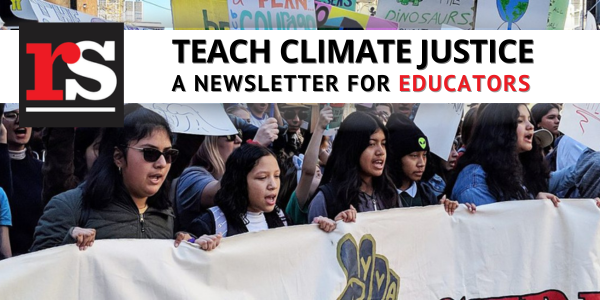
We offer you the inaugural Teach for Environmental Justice Newsletter from Rethinking Schools.
Last year the Earth shattered climate records, and the entanglement of militarism and fossil fuels bears out new catastrophes every day. One piece of good news: More and more educators are searching for ways to incorporate the climate emergency into their classrooms. But you may know that already.
In launching this newsletter, we aim to connect climate justice educators across regions, disciplines, and grade levels to deepen their work. We’ll explore what “climate justice” education looks like through a kaleidoscope of teaching environments and invite you to join us in conversation and movement-building. The newsletter will feature the work of educators around the country, alert you to resources, offer access to climate justice workshops and webinars, pilot book giveaways and curriculum workgroups, and articulate a radical climate justice politics.
Sound ambitious? Wish us luck.
— Bill Bigelow and Mimi Eisen
Subscribe to get future issues delivered right to your inbox.
The War on Gaza Is also a War on the Climate
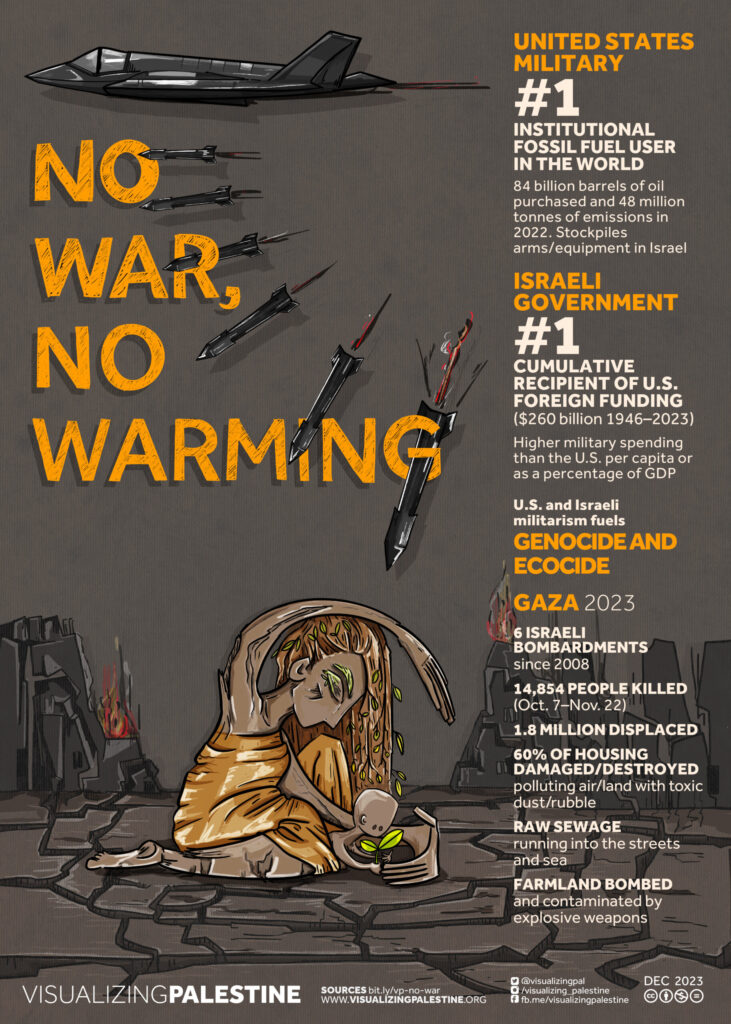
The new “Teach Palestine” Rethinking Schools collects pieces on teaching about Palestine-Israel amid the U.S.-backed genocide in Gaza and the growing attack on social justice education. Climate justice educators have a crucial role here, as Israel’s unrelenting blockade and bombardment deepen — and wield — a cascade of unnatural disasters and humanitarian crises.
Recent reporting from Muslim Climate Watch, among others, describes Israel’s climate warfare through environmental degradation, famine, displacement, fossil fuel expansion, and global warming. From last October to December alone, the Israeli military’s planet-warming emissions exceeded the annual carbon footprints of 20 of the world’s most climate-vulnerable countries. The U.S.-funded bombs falling on Gaza have destroyed the majority of its main solar rooftop installations, “denying Palestinians the ability to employ climate mitigation and adaptation efforts” in an area already ravaged by climate horrors. And these assaults are engineering displacement and famine at staggering rates, while the United States sets up a “temporary aid port” that might double as an outpost for extracting offshore natural gas.
“Gaza has become a clarion call, a kind of ground zero for the atrocities perpetuated over decades of occupation, blockades, and environmental apartheid,” human rights lawyer Kavita Naidu explains. “For the climate movement, and for all movements that are taking the streets across the world, if we remain silent, ignore, and allow what is happening in Gaza — if we allow governments to be complicit in this genocide, then we are not only condemning Palestinian people but humanity as a whole for the political and economic interests of the rich and powerful.” The task before us is to heed this call, to teach about Palestine-Israel as a climate justice issue of the greatest magnitude.
The Climate Crisis Has a History. Teach It.

Our Zinn Education Project (coordinated with Teaching for Change) has released an interactive timeline of the climate crisis because young people deserve tools to help them understand who shaped the warming world they inherited and how to meet the crises in front of them. And we wanted to urge history teachers to see the climate crisis as “theirs.”
Ursula Wolfe-Rocca and Mimi, who co-authored the timeline, introduced it in a recent issue of Rethinking Schools: “Like all timelines, ours is curated according to a set of guiding principles — but unlike textbook timelines, our principles are explicit. Our goal is to historicize the climate crisis, showing that it was not inevitable, but created under a particular set of conditions, by particular groups of people, according to particular systems for organizing human life — imperialism, white supremacy, capitalism. At every stage, rebels and activists showed there were other possibilities for how life might be organized. These are our twin legacies — the systems that continue to threaten the Earth and the centuries-deep reservoir of resistance to them. Most of all, we want this timeline to confirm for students that the history of the climate crisis is still unfolding. What we do today matters. And the day after that. And the day after that.” Isn’t this the sensibility that should animate all climate justice teaching?
We offer the climate crisis timeline and teaching ideas so that educators and students can examine the choices the climate crisis poses and work toward meaningful solutions. We’re eager to hear how you use it in your classrooms and your work with colleagues. Experiment, share teaching stories, and spread the word on social media (#TeachClimateJustice).
Should Schools Teach Climate Activism? Yes.
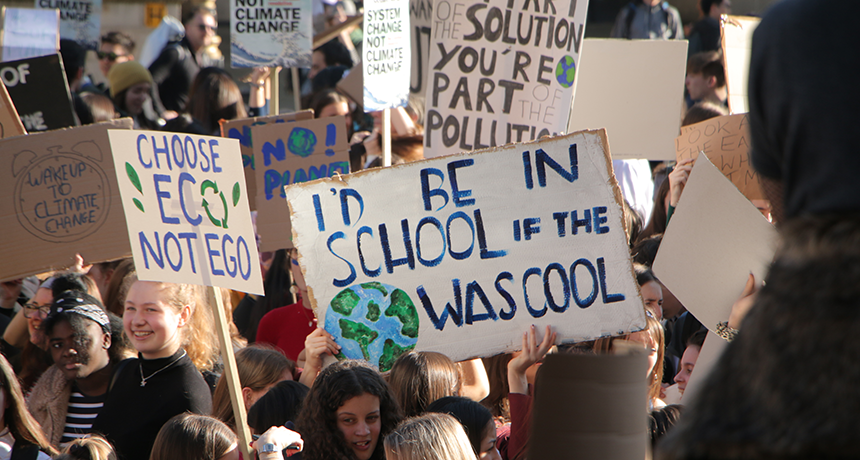
It is heartening to see more events and discussions grounded in students’ organizing for a better world than the one they inherited. Climate anxiety is soaring among young people, but so is collective action. A recent piece by Anya Kamentz in The Hechinger Report asks educators: Should schools teach climate activism?
Three respondents see the value in teaching about climate change as a crisis that requires all hands on deck — to show students how it is both global and local, universal and personal. Another peppers the piece with milquetoast reasons to hold the line. Learning about climate change is one thing, she concedes, but taking action to ameliorate it is a bridge too far. Never mind that the chilling effect of right-wing anti-education bills won’t be cooling the Earth anytime soon.
“Teachers and professors waver between empowering young citizens and courting controversy,” writes Kamentz, despite “a broad bipartisan consensus that schools have an obligation to prepare citizens to participate in a democracy.” OK, sure. So what does democracy look like on an uninhabitable planet? Maybe instead of asking if schools should teach climate activism, we might ask if schools should teach that people have, in the words of Indigenous activist Rafael Herrera, “the right to oppose our own extinction.” Imagine the replies.
And, speaking of inspiring student activism, in case you missed it, see Bill’s “Earth, Justice, and Our Classrooms” column, “Baltimore Students Fight for Climate Justice — and Their Own Lives,” in the Winter 2023–24 issue of Rethinking Schools. There is no contradiction between activism and education.
“Go After These Bastards”
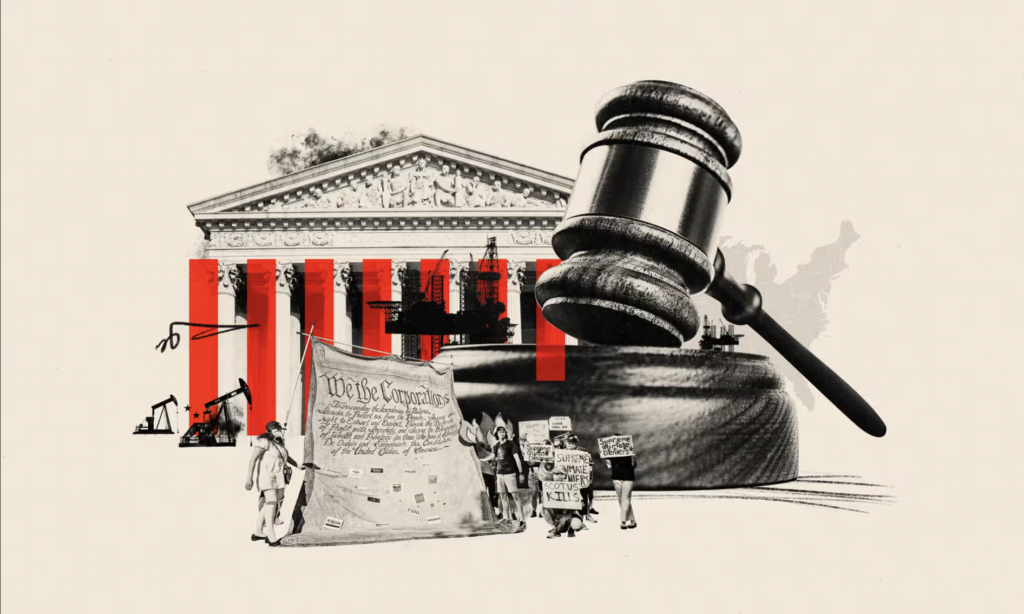
Dharna Noor reports in The Guardian that “Each year, extreme temperatures take 5 million lives, while 400,000 people die from climate-related hunger and disease and scores perish in floods and wildfires.” Public Citizen has proposed that oil companies be charged with homicide for these deaths — and the idea is gaining traction. “I strongly support the effort to go after these bastards,” Pennsylvania state representative Christopher Rabb said at a recent UPenn event.
A crazy idea? Sharon Eubanks was lead counsel in the successful 2005 legal action against big tobacco. “There were a lot of people who said we were crazy to charge big tobacco with racketeering and that we could never win,” Eubanks said. “But you know what? We did win. I think we need that same kind of thinking to deal with the climate crisis.”
See our lesson, “The Climate Crisis Trial: A Role Play on the Roots of Global Warming,” included in A People’s Curriculum for the Earth and posted at the Zinn Education Project. In groups, students represent five “defendants” in the activity: The “Market” — the System of Global Capitalism; the U.S. Government; U.S. Consumers; the Governments of China, India, and Other “Developing” Countries; and Oil and Coal Companies. Each is charged with causing the climate catastrophe and all its ravages: the destruction of cultures, extinction of species, the death of people all over the world, and threatening the lives of people in future generations. Omaha, Nebraska, middle school teacher Brett Benson described his experience teaching the Climate Crisis Trial: “This is one of those lessons teachers dream about where students are walking out the door still discussing and debating.”
Teaching the Truth About National Parks
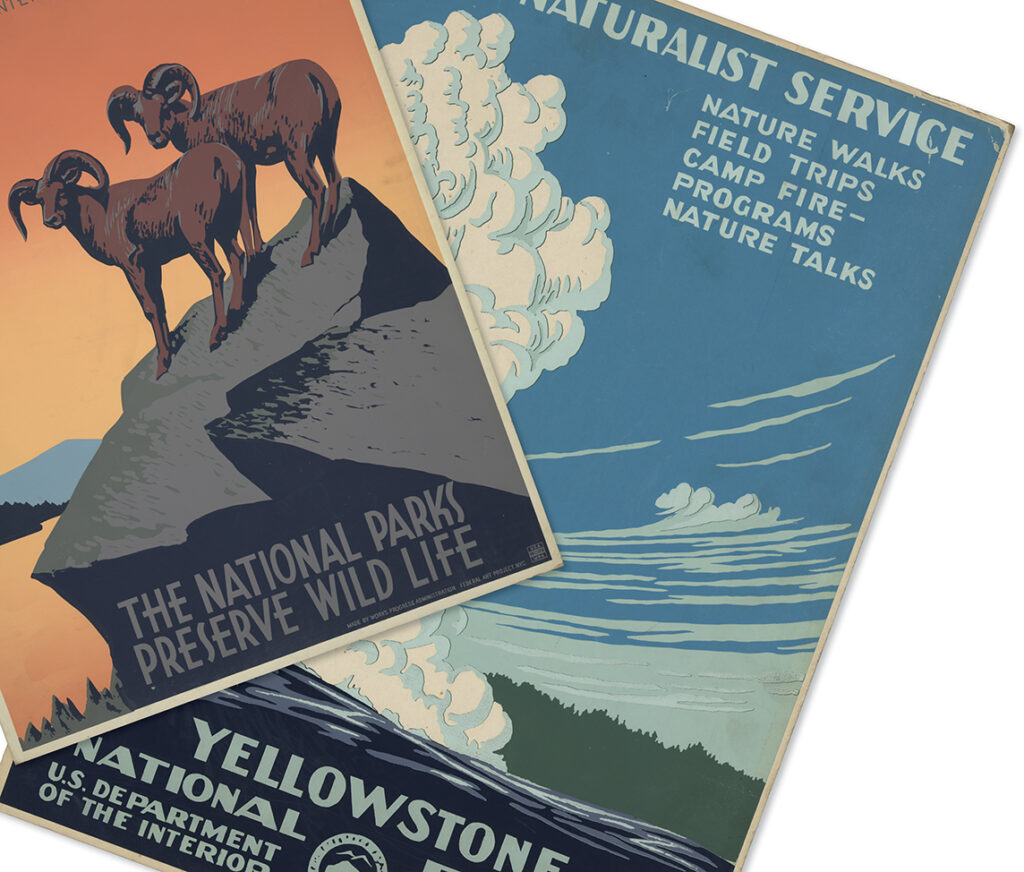
The new “Earth, Justice, and Our Classrooms” column in the spring issue of Rethinking Schools is Tim Swinehart’s “Teaching the Truth About National Parks.” Tim opens his piece with several quotes, including one from the Ojibwe writer David Treuer: “When Yellowstone was established, the Plains Wars were raging all around the park’s borders. It was as though the government paused mid-murder to plant a tree in the victims’ backyard. . . . Viewed from the perspective of history, Yellowstone is a crime scene.”
Tim describes his high school environmental justice class in Portland, Oregon: “I want students to see that the conservation model at the heart of the 20th-century environmental movement in the United States grew out of the genocidal war against Native Americans — in fact, after expelling Indigenous tribes from the areas of Yellowstone and Yosemite, both parks spent decades under military occupation before being handed over to the park service.” In his article, Tim describes teaching resources he uses with students — excerpts from books by Mark Dowie and Ted Steinberg; a short, excellent video from Grist; and more. Check out Tim’s latest article, and look for future Rethinking Schools pieces that underscore the importance of teachers distinguishing between conservation and environmental justice.
Subscribe to Rethinking Schools’ new climate justice newsletter.
